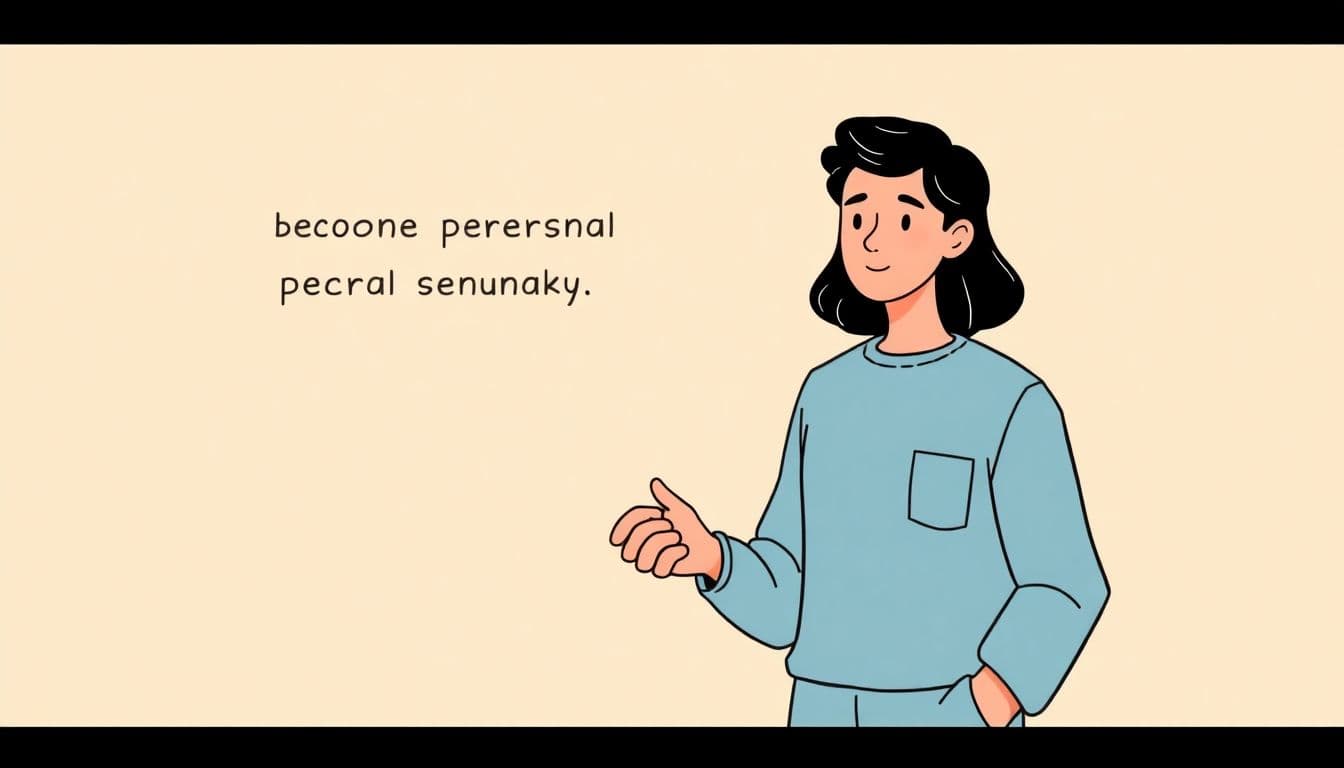Table of Contents
Feeling like writing a query letter is as daunting as climbing a mountain in flip-flops? You’re not alone—summarizing your entire book in just a few paragraphs can feel downright impossible.
But don’t worry! With a few friendly tips, you can craft a query letter that grabs an agent’s attention and showcases your unique story.
Stick around, and I’ll walk you through some simple steps to make your query letter stand out from the crowd.
Key Takeaways
- Understand that a query letter is a one-page pitch to literary agents aimed at showcasing your book.
- Research and prepare before writing by finding agents who represent your genre and noting their guidelines.
- Use a professional format with a formal greeting, standard font, and include your contact information.
- Personalize your letter by addressing the agent by name and mentioning why you chose them.
- Write a strong hook to capture the agent’s attention right from the start.
- Craft a concise book synopsis focusing on the main plot and key characters.
- Include a brief author bio highlighting relevant writing experience or credentials.
- Maintain brevity and clarity, keeping your letter to the point and easy to read.
- Proofread carefully to eliminate typos and ensure proper formatting.
- Send your query and patiently wait for responses while continuing to write.
- If needed, review and revise your query letter to improve your chances.

Step 1: Understand the Purpose of a Query Letter
A query letter is your first impression to literary agents.
It’s a one-page document that pitches your book in a compelling way.
The main goal is to grab the agent’s attention and entice them to request your manuscript.
Think of it as a professional introduction that showcases your story and your writing style.
Understanding the purpose of a query letter helps you focus on what matters.
You’re not just summarizing your book; you’re selling it.
Agents receive hundreds of queries every week, so yours needs to stand out.
A well-crafted query letter can significantly increase your chances of getting published.
If you’re new to the publishing world, you might wonder how to get a book published for the first time.
Knowing how to present yourself through a query letter is a crucial step in that journey.
By focusing on the key elements that agents look for, you can make a strong impression.
Step 2: Prepare Before Writing Your Query Letter
Before you start writing, take some time to prepare.
Research literary agents who represent your genre.
Make a list of agents and note their submission guidelines.
Each agent might have different requirements, so it’s important to follow them closely.
It’s also helpful to read successful query letters to see what works.
You might want to check out examples from authors who have secured representation.
Understanding the common elements can guide you in crafting your own letter.
If you’re considering alternative routes, you might be interested in how to get a book published without an agent.
Knowing all your options can help you make informed decisions about your publishing path.
Preparing thoroughly will make writing your query letter much easier.
Step 3: Use a Professional Format for Your Query Letter
Using a professional format shows agents that you’re serious.
Start with a formal greeting, using the agent’s name.
Keep the letter to one page, single-spaced, and use a standard font like Times New Roman.
Include your contact information at the top or bottom of the letter.
Structure your query letter logically.
Begin with a strong hook or tagline that grabs attention.
Follow with a brief synopsis, around 150-300 words, highlighting the main plot and characters.
Mention the genre, word count, and title of your book.
If you’re unsure about formatting, it might help to look at what a manuscript looks like.
Though the query letter is different from the manuscript, understanding professional standards is beneficial.
Include a short bio about yourself, focusing on your writing experience.
When mentioning your credentials, be honest but humble.
If you have previous publications or relevant experience, highlight them.
End with a polite thank you and a closing statement.
Remember to proofread your letter carefully to avoid any typos or errors.

Step 4: Personalize Your Query Letter for the Agent
When reaching out to agents, it’s important to make your query letter feel personal.
Start by addressing the agent by name, not just a generic “Dear Agent.”
Agents appreciate when you’ve done your homework about them.
Mention why you’re querying them specifically.
Perhaps you loved a book they represented, or they mentioned they’re seeking your genre.
This shows that you’re serious and not just sending out a mass email.
But keep it genuine and avoid flattery that doesn’t feel authentic.
Personalization can make your query stand out in a sea of submissions.
Remember, agents are people too, and they like to see that you’ve taken the time to get to know their interests.
It might help to read about how to become a beta reader to understand how readers interact with manuscripts.
This insight can help tailor your query to what agents and readers are looking for.
Step 5: Write a Strong Hook to Capture Attention
Your opening line needs to grab the agent’s attention right away.
This is where you present the essence of your story in a compelling way.
A strong hook can make an agent eager to read more.
An author once reported receiving 26 full requests and eight offers from agents thanks to a well-structured query letter.
This highlights how crucial a compelling hook and strategic elements are.
Keep it concise, and make sure it reflects the tone and genre of your book.
If you’re writing a thriller, the hook should be suspenseful.
For example, “When a sleepy town’s secrets unravel, one detective must choose between justice and family.”
Crafting a good hook might remind you of creating horror story ideas that catch the reader’s eye.
Don’t be afraid to experiment until you find the perfect line that encapsulates your story.
Step 6: Craft a Clear and Concise Book Synopsis
After the hook, you need to provide a brief summary of your book.
This isn’t the place for detailed subplots or every character’s backstory.
Focus on the main plot, key characters, and what’s at stake.
Aim for 150 to 300 words, as advised in common query letter structures.
Remember, agents are looking for a synopsis that is engaging and easy to understand.
Stick to the present tense and third person, even if your book is written differently.
The synopsis should give a clear sense of the beginning, middle, and end.
Yes, even the ending—agents need to know how the story resolves.
If you’re unsure how to condense your book, imagine explaining it to a friend over coffee.
You might find helpful tips in resources about how to write in present tense.
This can keep your synopsis consistent and professional.
Step 7: Include Your Author Bio and Writing Credentials
In your query letter, it’s important to introduce yourself.
This is your chance to share relevant information about you as a writer.
If you’ve been published before, mention it briefly.
Include any awards, writing degrees, or memberships in writing organizations.
If you don’t have formal credentials, that’s okay.
You can share experiences that inspired you to write this book.
Keep your bio short, around 50 to 100 words, as is common in query letters.
Avoid including personal details that aren’t related to your writing.
Agents want to know about your potential as an author.
For students or new writers, looking at author bio examples for students can provide inspiration.
Remember, authenticity is key. Let your passion for writing shine through.
Step 8: Focus on Brevity and Clarity in Your Writing
Agents appreciate query letters that get to the point.
Keep your language clear and sentences concise.
Avoid using overly complex words or industry jargon.
Your entire query should not exceed one page, single-spaced, or around 200 to 450 words.
This includes all the key elements: your hook, synopsis, bio, and closing.
Every word counts, so make each one purposeful.
Cut out any unnecessary details or filler phrases.
A well-crafted, succinct query shows respect for the agent’s time.
It also demonstrates your ability to write tightly, which is a valuable skill.
If you need help simplifying your writing, consider using a dumb it down generator to make your language more accessible.
Remember, clarity trumps complexity every time.
Step 9: Proofread and Format Your Final Query Letter
Before hitting send, take the time to proofread your query letter thoroughly.
Typos and grammatical errors can distract from your content and make you appear unprofessional.
Read your letter out loud to catch any awkward phrasing.
It can also help to have a friend or fellow writer review it.
Ensure that your formatting is clean and consistent.
Use a standard font like Times New Roman or Arial at 12-point size.
Stick to black text on a white background.
Double-check that you’ve followed the agent’s submission guidelines exactly.
Agents may have specific preferences for formatting or file types.
Attention to detail here shows that you are professional and meticulous.
If you’re considering hiring a professional, you might want to learn how to become a book editor yourself, or find someone who is.
A polished query letter increases your chances of a positive response.
Step 10: Send Your Query Letter and Wait for Responses
Once you’re confident in your query letter, it’s time to send it out.
Prepare for the waiting game, as response times can vary greatly.
Some agents might reply within days, others could take months or even longer.
Don’t let this discourage you.
It’s recommended to query around 150 agents, especially if your genre has many representatives.
You can send queries in batches over several months.
Keep track of who you’ve queried and their responses.
Remember, a rejection rate higher than 50% is normal in this process.
While you wait, continue working on your next writing project.
This keeps you productive and helps pass the time.
Rejections are part of the journey and not a reflection of your worth as a writer.
For alternative options, you might explore alternatives to Amazon KDP for self-publishing routes.
Stay positive and persistent.
Step 11: Review Key Points to Improve Your Query Letter
If you’re not getting the responses you hoped for, it might be time to revisit your query letter.
Look over the feedback you’ve received, if any.
Consider whether your hook is strong enough or if your synopsis is clear.
You might need to personalize your letter more or tighten your writing further.
Don’t hesitate to seek advice from writing groups or mentors.
Revise your query letter based on constructive criticism.
Remember, persistence is key in the publishing industry.
Each revision brings you closer to your goal.
You might also benefit from learning how to get a book published without an agent as another avenue.
Keep refining your approach, and don’t give up.
FAQs
A query letter should be one page long, typically around 300 to 400 words. Keeping it concise ensures that agents can quickly grasp your book’s premise and your qualifications.
Yes, personalizing your query letter demonstrates professionalism and genuine interest. Mention why you’re querying that specific agent and how your work aligns with their represented genres.
Yes, it’s acceptable to send queries to multiple agents simultaneously. However, if an agent requests an exclusive look, it’s courteous to honor that request for a reasonable time frame.
Include relevant writing credentials, such as published works, awards, or education. If you have expertise related to your book’s subject matter, highlight that to establish credibility.



